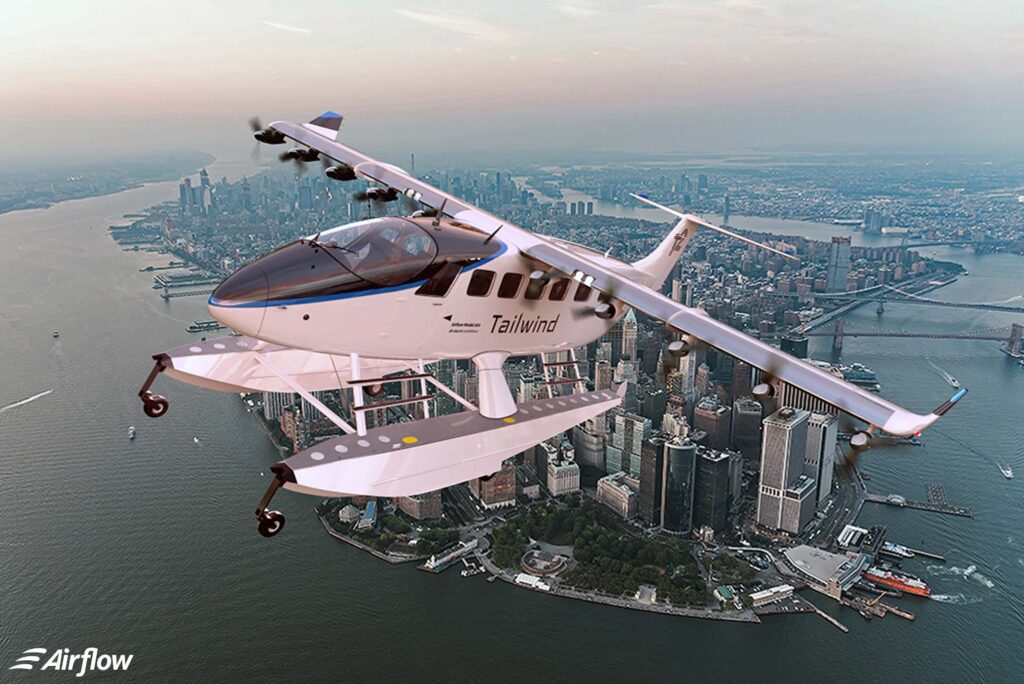
Tailwind and Airflow are working on the development of the first distributed electric propulsion, amphibious seaplane in a new partnership.
The world’s first amphibious seaplane using distributed electric propulsion will be developed by a new partnership between Airflow.aero and Tailwind Air. Tailwind’s Letter of Interest (LOI) commitment means it will be the exclusive Airflow Model 200 floatplane launch customer for the New England and Mid-Atlantic areas and aims to acquire 20 of the M200 production aircraft. Airflow’s current order total is now $720 million and comes from 13 customers.
An amphibious seaplane and air charter operation, Tailwind pioneered the first-ever scheduled seaplane service from New York to Boston Harbor this year. The company offers time savings for customers by taking advantage of the existing infrastructure such as waterways and small airports close to urban centers. The current fleet is made up of Cessna Caravan amphibious seaplanes, each with two pilots and seats for eight passengers. Thanks to the agreement with Airflow, Tailwind will be able to operate carbon-free regional transportation services by utilizing the distributed electric propulsion system.
Airflow CEO and co-founder Marc Ausman commented that the M200 aircraft will offer not only sustainability but also reduced noise levels during operation, lower operating costs, faster cruise speeds, and shorter takeoff and landing distances.

Cessna Caravan amphibious seaplanes make up Tailwind Air’s current fleet.
Alan Ram, CEO of Tailwind Air, stated, “We actively sought out a partner that could accelerate the timeline of electric aviation’s impact in our particular segment of the market. With its combination of distributed electric propulsion and a modern airframe that still uses traditional construction, flight controls, and the like, the Airflow aircraft has a definable development timeline and a clear path to certification.”
Ram expects the setup of the partnership to ensure a smooth operational integration. In discussing the announcement of the amphibious seaplane, he said, “There’s a lot of exciting innovation happening in aviation, but not all of it will deliver a meaningful impact in the coming decade; we think this will.”
Airflow’s recent partnership with Pipistrel was announced shortly after news of their agreement with Honeywell to explore radar integration. Pipistrel has agreed to supply batteries, motors, and motor controllers for Airflow’s aircraft that uses distributed electric propulsion. In the interview with Avionics International, Airflow’s Ausman emphasized the team’s focus on delivering value to commercial operators as soon as possible.